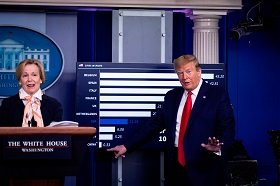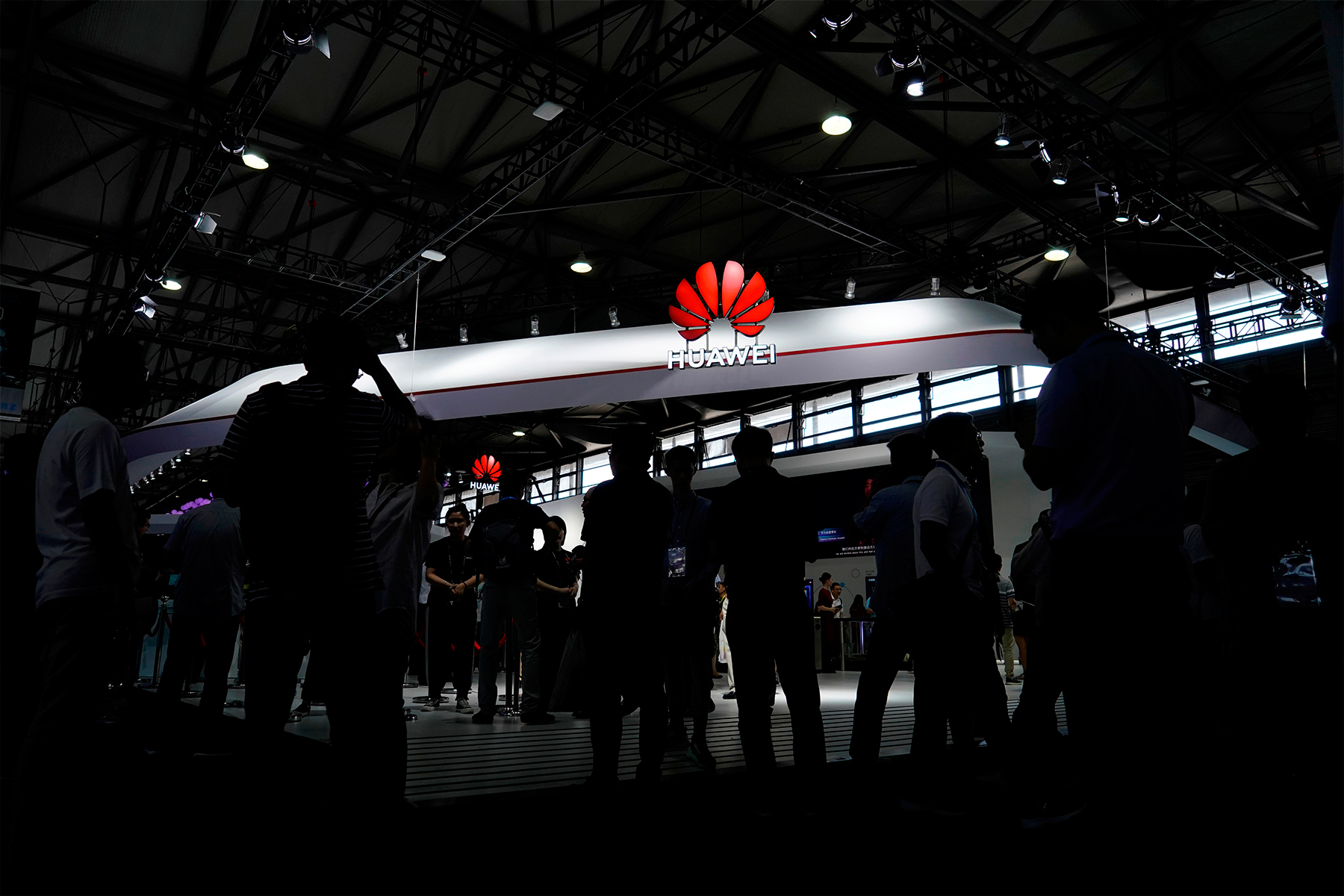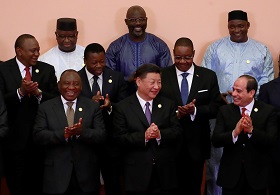Against the backdrop of the COVID-19 epidemic, an escalation of US claims against the People’s Republic of China has become a familiar news background. A series of bills has appeared in the US Congress, imposing sanctions against Chinese officials and organisations, whom the Americans are holding responsible for censoring medical information and untimely measures to counter the virus. At the same time, US demands are also growing louder in connection with alleged violations of the rights of ethnic minorities and the Hong Kong situation. Bills to counter China in recent months number in the dozens. The vast majority of them will never become laws. Their radical nature is the result of public policies inherent in many parliamentary institutions.
The outlook of the White House, reflected in the document, supports the position of those who predict the transformation of the modern world order to a bipolar system. The question remains, how exactly will China respond? How quickly will the decoupling of the American and Chinese economies occur? What will be the implications for a global economy weakened by COVID-19? Will it be possible to restrain relations within the framework of competition and avoid confrontation?
A separate question is how the EU, India, Russia and other major players will behave. All of them maintain different relations with the USA. However, few people like this offensive enthusiasm, the price of which will be the need to choose a side, lose markets, and break ties developed over the years. The near future will show their reliability or, conversely, fragility in the face of the new competition of large players.
Against the backdrop of the COVID-19 epidemic, an escalation of US claims against the People’s Republic of China has become a familiar news background. A series of bills has appeared in the US Congress, imposing sanctions against Chinese officials and organisations, whom the Americans are holding responsible for censoring medical information and untimely measures to counter the virus. At the same time, US demands are also growing louder in connection with alleged violations of the rights of ethnic minorities and the Hong Kong situation. Bills to counter China in recent months number in the dozens. The vast majority of them will never become laws. Their radical nature is the result of public policies inherent in many parliamentary institutions.
However, the general atmosphere is clearly being pumped up. It has come to the point that Republican Scott Perry introduced two bills to empower the president to recognise Hong Kong and Tibet as independent states. Regular sanctions were proposed by Senator Pat Toomey on entities that violate China's obligations to Hong Kong under the Sino-British Joint Declaration and the Basic Law.
The administrations steps seem much more serious. The White House has published a new strategic document revealing US policy towards China. The document is a development of the provisions of the 2017 National Security Strategy. At its core, it is a conceptualisation of a new US policy towards China. It is noteworthy that it does not refer to COVID-19. It lacks the pathos of Congressional bills and is written in the clear language of professional bureaucrats. All things are named in their own words, without diplomatic curtsies, hints and half-tones. The appearance of such documents represents an obvious large-scale shift to a tough confrontation with China, which will also mean a shift in world politics.
The main idea of the new "United States Strategic Approach to the People’s Republic of China" is simple. 40 years after the establishment of diplomatic relations and the beginning of large-scale cooperation between the two countries, Washington has parted with hopes for the democratisation of the Chinese state and its transformation into a full-fledged market economy. China has become neither one nor the other. Instead, it has become a threat to the US economy, security, values and leadership. Instead of the illusion of China’s integration into the American-led international community, an extremely realistic policy in the spirit of the rivalry between the great powers is now required. It should include pressure on China and its containment in order to ensure US prosperity, protect the state, promote the notion of peace based on force, and exert American influence in the world. Moreover, competition should not extend beyond this dangerous framework and not give in to confrontation or open conflict.
The document summarises the US claims against China. In economics, they boil down to the fact that, despite being part of the global market economy, China remains a non-market state. Excessive industrialisation (industrial overcapacity), protectionism and public administration tools give China advantages that market economies do not have. This means that the PRC is developing at the expense of the market economy and is engaged in unfair competition. Its active borrowing of American technology constitutes a threat to US security, as it creates rules by which American firms are forced to transfer their technology to China, takes over American companies, and commits intellectual property infringement, and industrial espionage.
Naturally, the Chinese Belt and Road project is also being criticised. The US authorities consider it to be a political project to reform the global rules of the game and standards in favour of China. Instead of promoting development, according to Americans, it leads to corruption, environmental pollution, non-transparent loans and financial transactions, and also makes foreign countries Chinas dependent vassals.
The increased activity of China in the use of economic instruments for political purposes (actually in the form of sanctions) is also considered as a threat. True, the document does not note that the United States is still the global leader in the use of sanctions. However, the growing number of precedents of such measures being taken by China is clearly assessed as a challenge.
Another group of claims is a challenge to American values. A few years ago, my fellow sinologists were sceptical about the assumption that China could be perceived as the leader of a new global left-wing (socialist) alternative. Indeed, China was extremely cautious in its approach to the issue of ideology in foreign policy, leaving it as its internal affair. Today, the Americans believe that China seeks global leadership, including the promotion of its model, which the authors of the document understand as a mixture of a special interpretation of Marxism-Leninism, nationalism, one-party dictatorship, a command economy, the suppression of human rights and control of science and technology by the state. This argument is supported by references to the suppression of the opposition, censorship, and the infringement of minorities in China itself.
The third group is security challenges. China has become a major military power. Its nuclear potential is growing. In addition, China is turning into a powerful player in the digital and information space.
All these challenges require decisive action. Along with military deterrence, they should also impose tough, clear, and verifiable agreements on Beijing, taking into account the experience of many commitments that China has violated in the past. The active work of law enforcement agencies is required to stop cyber espionage and intellectual property leakage, to counter information campaigns and attempts to use workarounds to influence the United States (for example, universities and research centres). At the same time, the balance of economic relations between the United States and China should be radically changed. The document postulates the task of expanding US influence, as well as strengthening relations with allies and partners in the Indo-Pacific region. It is noted that the United States is not going to impose democracy on China or interfere in its affairs and does not want to escalate the situation to confrontation. It is necessary to cooperate with China when it is in the interests of the United States. Interestingly, the document relies on the concept of selective cooperation (our engagements are selective and results-oriented), which involuntarily refers the Russian reader to the EUs Mogherini principles regarding selective cooperation with Russia following the Ukrainian crisis of 2014.
The outlook of the White House, reflected in the document, supports the position of those who predict the transformation of the modern world order to a bipolar system. The question remains, how exactly will China respond? How quickly will the decoupling of the American and Chinese economies occur? What will be the implications for a global economy weakened by COVID-19? Will it be possible to restrain relations within the framework of competition and avoid confrontation?
A separate question is how the EU, India, Russia and other major players will behave. All of them maintain different relations with the USA. However, few people like this offensive enthusiasm, the price of which will be the need to choose a side, lose markets, and break ties developed over the years. The near future will show their reliability or, conversely, fragility in the face of the new competition of large players.
First published in the Valdai Discussion Club.








